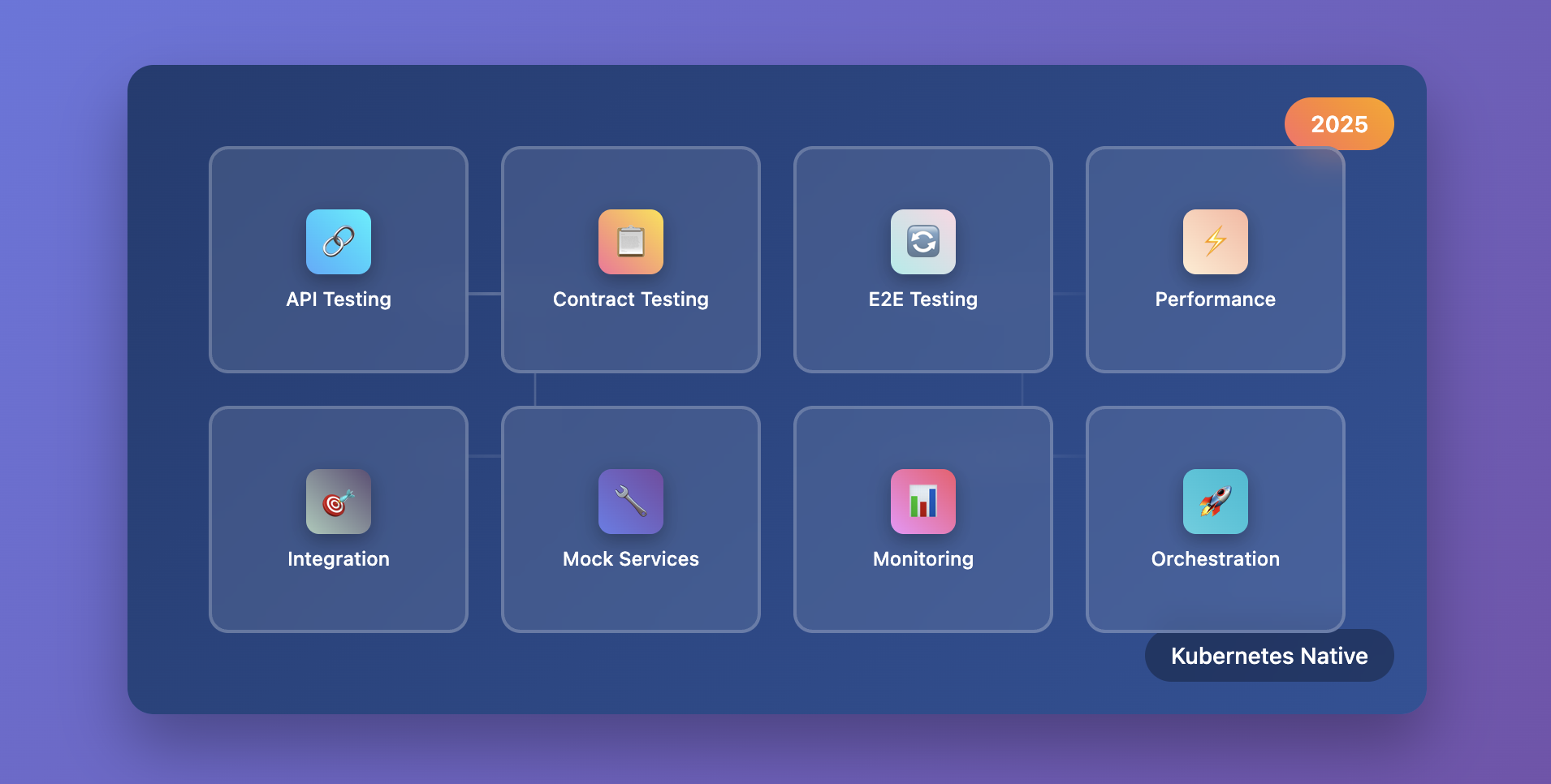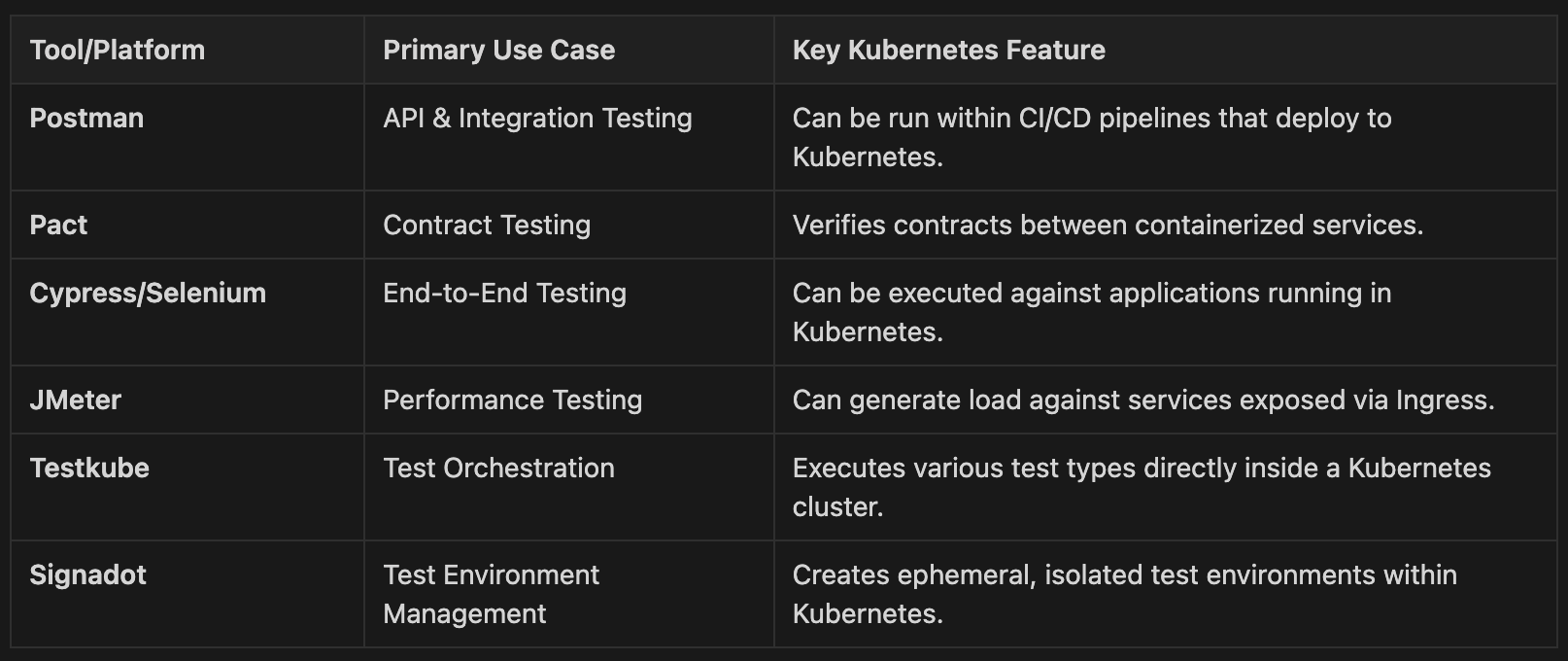Best Microservices Testing Solutions for Kubernetes in 2025

The adoption of microservices architectures, orchestrated by Kubernetes, has become a standard for building scalable and resilient applications. While this architectural style offers significant advantages in development velocity and service independence, it introduces considerable complexity into the testing process. Effectively validating the behavior of distributed services within a dynamic Kubernetes environment requires a sophisticated strategy and a carefully selected set of tools. This article provides a technical overview of the leading microservices testing solutions available in 2025, categorized by their primary function within the development lifecycle.
The Unique Testing Challenges in a Kubernetes Environment
Testing applications in Kubernetes is fundamentally different from testing monolithic systems. The distributed and ephemeral nature of containers, coupled with the complexity of network policies, service discovery, and configuration management, presents unique obstacles. A successful testing strategy must account for the entire cloud-native ecosystem, including container orchestration, service meshes, and CI/CD pipelines.
Key challenges include:
- Environment Provisioning: Creating realistic, isolated, and cost-effective test environments that accurately replicate production is a major bottleneck.
- Service Dependencies: A single microservice often depends on numerous other services. Testing a service in isolation requires mocking or stubbing these dependencies, while integration testing requires a running instance of the entire dependency chain.
- End-to-End Validation: Verifying a complete business workflow that traverses multiple services is complex to set up, execute, and debug.
- Observability: Pinpointing the root cause of a failure in a distributed system requires robust logging, metrics, and distributed tracing capabilities.
API and Integration Testing Tools
Integration testing is critical for ensuring that microservices interact with each other correctly, validating data flow and communication protocols.
- Postman: Originally an API client, Postman has evolved into a comprehensive API development and testing platform. It is highly effective for microservices, allowing teams to create, share, and automate test collections. Its support for environment variables, automated test scripts, and CI/CD integration makes it a staple for validating API endpoints and basic service integrations.
- WireMock: For true unit and integration testing of a single service, its dependencies must be simulated. WireMock is a leading tool for service virtualization, enabling developers to create mock HTTP-based APIs. By simulating dependent services, teams can test a microservice in isolation, ensuring its logic is correct without needing a fully deployed environment.
Contract Testing Tools
Contract testing addresses a common failure point in microservices: unintended breaking changes introduced when a provider service updates its API. It verifies that an API provider adheres to a "contract" expected by its consumers.
- Pact: Pact is a widely used tool for consumer-driven contract testing. The consumer service defines a contract specifying its expectations of a provider. This contract is then used to verify that the provider service meets those expectations. This approach allows services to evolve independently while providing a fast and reliable feedback mechanism to prevent integration failures.
End-to-End (E2E) Testing Tools
E2E testing validates entire user workflows from start to finish, ensuring all integrated services work together as a cohesive system.
- Selenium: As a long-standing standard for browser automation, Selenium remains a powerful tool for E2E testing of web applications built on microservices. It supports cross-browser testing in multiple programming languages and can be integrated with other tools to achieve comprehensive test coverage. However, its tests can be brittle and require significant maintenance.
- Cypress: A modern alternative to Selenium, Cypress is favored for testing JavaScript-based frontends. It runs directly in the browser, providing faster feedback, time-travel debugging, and built-in mocking capabilities. These features make it highly effective for testing the user-facing components of a microservices architecture.
Performance and Load Testing Tools
Performance testing is essential for microservices to ensure the system can handle production-level traffic and maintain responsiveness under load.
- Apache JMeter: A versatile open-source tool, JMeter is widely used for load and performance testing of APIs, web applications, and other network services. It supports a wide range of protocols, offers distributed testing capabilities to simulate heavy loads, and integrates seamlessly into CI/CD pipelines for continuous performance validation.
- LoadRunner: For enterprise-grade performance engineering, LoadRunner provides a robust solution for simulating complex, real-world user traffic. It supports a vast array of protocols and technologies and offers in-depth analysis and monitoring features to identify performance bottlenecks across a distributed architecture.
Kubernetes-Native Test Orchestration and Environments
The tools listed above are essential, but their effectiveness in a Kubernetes environment is often limited by the challenge of test execution and environment management. Kubernetes-native solutions are designed to address this gap directly.

- Testkube: Testkube is a test execution and orchestration framework built specifically for Kubernetes. It allows developers and testers to execute tests using their preferred tools (like Cypress, Postman, or k6) directly within the cluster. By managing tests as Kubernetes resources, it decouples testing from the CI/CD system and enables more scalable, cloud-native testing workflows.
- Signadot: A primary challenge in microservices testing is creating fast, isolated, and production-like environments. Signadot addresses this by providing a platform to create on-demand, ephemeral testing environments—called Sandboxes—within an existing Kubernetes cluster. Instead of duplicating an entire stack of services, a Sandbox deploys only the container for the service under test (e.g., from a pull request). Intelligent request routing directs test traffic to this new version, while all other requests for dependent services are routed to the stable baseline services in the shared cluster. This approach reduces infrastructure costs and provides developers with a high-fidelity test environment in seconds. Signadot can orchestrate existing test suites from frameworks like Playwright, Selenium, and Postman within these Sandboxes, bridging the gap between powerful testing tools and the complex Kubernetes environment they must run in.
Conclusion: Building a Holistic Solution
There is no single "best" microservices testing tool. An effective strategy for Kubernetes environments in 2025 relies on a combination of solutions that cover the entire testing pyramid—from API and contract tests to full end-to-end and performance validation. The selection of tools like Postman, Pact, and Cypress should be driven by the specific needs of the application and the team.
However, the foundational element that enables all these tools to function efficiently is the test environment itself. The complexity and cost of maintaining traditional staging environments are significant impediments to agile development. The most impactful solution is one that solves the environment problem. Platforms like Signadot provide this critical capability, enabling teams to run any type of test in a fast, isolated, and cost-effective manner directly within Kubernetes. By integrating a robust environment management platform, organizations can unlock the full potential of their testing tools and accelerate development velocity without compromising on quality.
Join our 1000+ subscribers for the latest updates from Signadot





